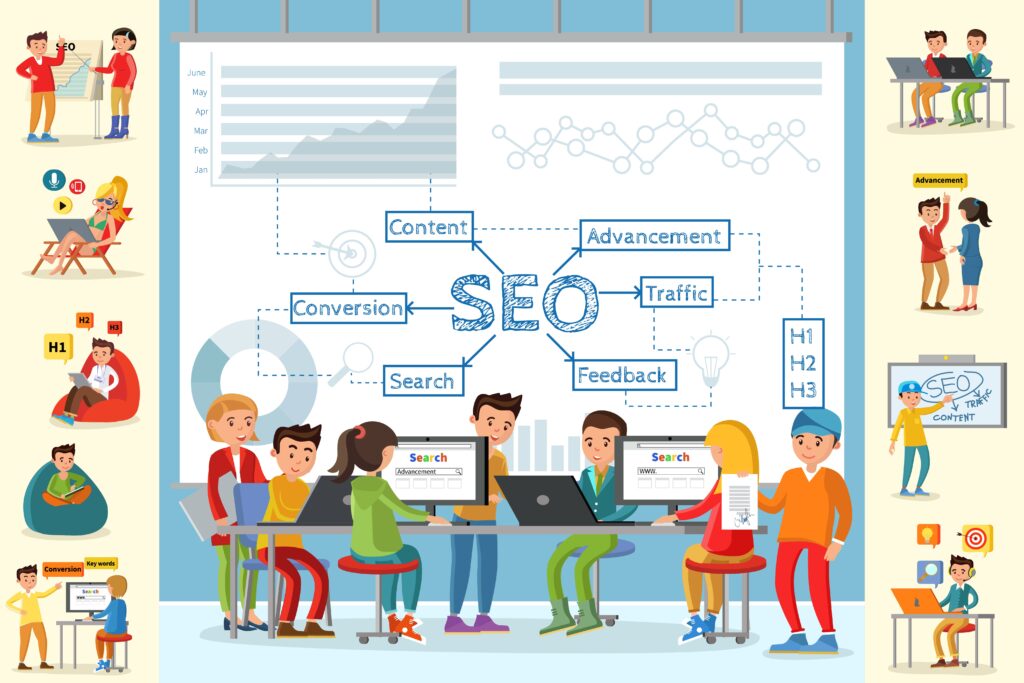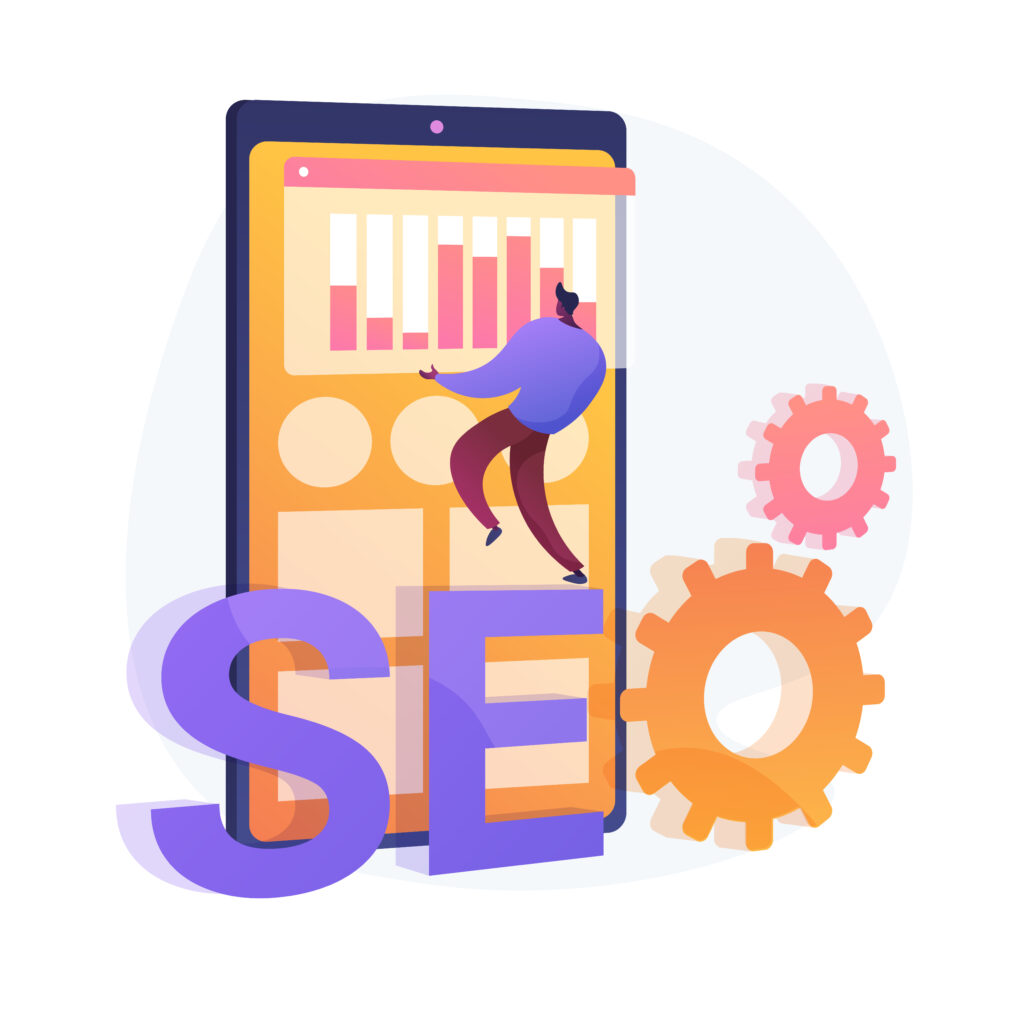Why Good Design Without SEO is a Wasted Investment
It is no longer sufficient to have an aesthetically pleasing website in today’s digitally-first society. While impressive visuals can capture attention, website design without SEO is a wasted investment. Many businesses spend heavily on design but overlook SEO—a critical factor that determines whether the site will ever be seen by potential customers. Your website design SEO strategy is just as important as the site’s aesthetics. Without proper optimization, you may end up with a visually appealing but invisible website that fails to drive organic traffic, generate leads, or boost sales. Let’s dive deeper into why design and SEO must work together to maximize your overall website investment.
Why Design and SEO Must Work Together
A website’s success relies on both its user experience (UX) SEO and its visibility in search engine rankings. An attractive website that isn’t search engine optimized is likely to go unnoticed—resulting in wasted time, effort, and money. That’s the danger of website design without SEO.
SEO for good design ensures your website is not only visually appealing but also functional, fast, and discoverable by search engines. Search engines prioritize websites that follow both web design best practices and SEO best practices, including optimized structure, fast load times, and mobile responsiveness.
A well-optimized website avoids the costly mistake of website design without SEO and significantly boosts your digital marketing ROI by driving consistent, long-term traffic—without the need to rely solely on paid advertising.
SEO for good design ensures your website is not just visually appealing but also functional, fast, and discoverable. Ignoring SEO means risking the consequences of website design without SEO, which often leads to low visibility and poor user engagement.
Search engines prioritize websites that implement both web design best practices and SEO best practices, including optimized structure, fast loading speeds, and mobile responsiveness.
A well-optimized website avoids the pitfalls of website design without SEO and significantly boosts your digital marketing ROI (Return on Investment) by driving consistent organic traffic—without relying solely on paid ads.

SEO for Good Design: The Hidden Power Behind Visibility
Design is about aesthetics, while SEO for good design ensures that design is both accessible and discoverable by search engines. However, website design without SEO means even the most creative and interactive site may fail to attract traffic or rank well online.
Key Elements of SEO for Good Design:
Mobile-Friendly Design SEO – Search engines reward mobile-optimized websites because the majority of users browse on smartphones. Failing to optimize for mobile is one of the biggest drawbacks of website design without SEO.
Website Load Speed Impact on SEO – A slow-loading website increases bounce rates and negatively affects your search rankings, turning your investment into a missed opportunity.
Technical SEO for Websites – Structured data, clean URL formatting, and optimized code help search engines better understand and rank your site.
Great design should seamlessly integrate content optimized with long-tail keywords that directly address user intent—something often overlooked in website design without SEO strategies.
Wasted Website Investment: What It Really Means
Design is about aesthetics, while SEO for good design focuses on making that design accessible and discoverable. However, website design without SEO fails to bridge the gap between visual appeal and online visibility. Without proper SEO, even the most creative and interactive website will struggle to attract visitors or rank on search engines.
Key Elements of SEO for Good Design:
Mobile-Friendly Design SEO – Search engines reward mobile-optimized websites because most users browse on smartphones. Ignoring this is a common pitfall in website design without SEO.
Website Load Speed Impact on SEO – A slow website increases bounce rates and damages search rankings, making speed a crucial factor in performance.
Technical SEO for Websites – Structured data, clean URLs, and optimized code help search engines better understand and index your site.
Great design should incorporate content optimized with long-tail keywords that address user queries—something that’s typically missing in website design without SEO strategies.
Imagine the Cost of Ignoring SEO
Imagine spending thousands on a stunning website that fails to generate leads or rank on Google. This is the reality of website design without SEO—a wasted website investment. A beautiful but unoptimized site is like opening a store in the desert: impressive, but invisible.
How SEO Prevents a Wasted Website Investment
Website Visibility – SEO ensures your site is discoverable by users actively searching for your products or services.
Conversion Rate Optimization(CRO) – Combining good design with SEO improves user journeys, leading to higher conversions.
Brand Authority Building – Higher rankings and optimized content establish your business as a trusted authority in your industry.

Website Design SEO: Building for Long-Term Success
Website design SEO is about creating a site that balances aesthetics, functionality, and performance. Without SEO, even the most beautifully designed site may fall short of its goals. That’s the problem with website design without SEO—it might look great but fail to attract or retain users. A truly effective website not only draws visitors in but keeps them engaged and guides them toward action.
Web Design Best Practices
Clean, intuitive navigation for a seamless user experience.
strategically placed to guide user behavior.
Visual hierarchy that emphasizes the most important content and drives user attention.
SEO Best Practices
Keyword-optimized headings and meta descriptions to improve visibility in search results.
Fast-loading images and compressed files to enhance site speed and reduce bounce rates—something often overlooked in website design without SEO.
Proper internal linking to improve both navigation and overall SEO performance.
By combining these best practices, you avoid the pitfalls of website design without SEO and build a high-performing website that supports both user experience and search engine success.
The Impact of User Experience (UX) SEO on Rankings
User experience (UX) SEO is a crucial ranking factor in today’s digital landscape. Google closely monitors how users interact with your site—so if your design looks good but loads slowly or is difficult to navigate, it can negatively impact your search engine rankings. That’s one of the biggest drawbacks of website design without SEO—it often fails to deliver a smooth, user-friendly experience that both users and search engines expect.
Improve UX with SEO-Friendly Design:
Ensure fast load times by optimizing images, scripts, and overall site performance.
Use responsive design for seamless browsing across all devices, including mobile and tablet.
offer engaging, keyword-rich content that answers user intent and keeps visitors on your site longer.
By avoiding website design without SEO, you create a digital experience that’s both visually appealing and technically sound—one that keeps users engaged and helps your site climb the rankings.

The Role of Content Strategy for SEO
A strong content strategy for SEO works hand-in-hand with your website design. While design captures initial attention, it’s the content that keeps users engaged and improves your rankings over time. Unfortunately, website design without SEO often neglects the power of high-quality content, leaving the site visually appealing but lacking visibility and value.
Tips for a Powerful SEO Content Strategy:
Use long-tail keywords like website design SEO, SEO for good design, website investment, and website design without SEO naturally throughout your content.
Write valuable, informative blog posts that address real customer pain points and search queries.
Regularly update your content
to keep it relevant, fresh, and favored by search engines.
By integrating your content efforts into your SEO plan, you eliminate the weaknesses of website design without SEO and build a site that’s optimized for both people and performance.
Website Load Speed Impact on SEO
A slow website can severely damage both user experience and organic traffic generation. In fact, studies show that if a site takes longer than three seconds to load, most users will leave—resulting in high bounce rates and lost opportunities. This is one of the most common pitfalls of website design without SEO, where visual elements are prioritized over performance.
How to Optimize Load Speed:
Use lightweight themes and eliminate unnecessary scripts to reduce load time.
Optimize image sizes without compromising quality for faster performance.
Leverage caching and Content Delivery Networks (CDNs) to deliver content more efficiently across regions.
Avoiding website design without SEO means building a fast, user-friendly, and search-optimized site that supports long-term traffic and engagement.
Mobile-Friendly Design SEO: A Must for Modern Websites
With mobile searches dominating the web, mobile-friendly design SEO is no longer optional—it’s essential. Google now uses mobile-first indexing, which means your mobile site plays a key role in determining your search rankings. Unfortunately, many businesses fall into the trap of website design without SEO, ignoring mobile responsiveness and losing valuable traffic in the process.
Checklist for Mobile SEO:
Ensure all design elements scale properly on smaller screens for a seamless user experience.
Avoid intrusive pop-ups that disrupt mobile browsing and frustrate users.
Use touch-friendly buttons and intuitive menus to make navigation easy and enjoyable on all devices.
By addressing mobile SEO from the beginning, you avoid the costly mistake of website design without SEO and ensure your site performs well across all platforms.

How Digital Marketing ROI Relates to Design and SEO
When you invest in both design and SEO, you’re building a sustainable digital asset. Unlike website design without SEO, which may look good but fails to perform, combining strong SEO with excellent design creates a website that delivers real results.
Benefits of Integrating SEO with Design:
Higher rankings on search engines.
Increased organic traffic generation.
Improved conversion rate optimization (CRO).
Better online presence optimization for long-term visibility.
A well-designed, SEO-optimized website isn’t just a one-time investment—it’s the foundation for long-term website success. In contrast, website design without SEO often leads to missed opportunities, low engagement, and poor ROI.
Key Factors for Long-Term Success:
Regular content updates to stay relevant and fresh in search results.
Ongoing SEO audits and improvements to maintain top performance.
Tracking analytics to measure user behavior and optimize accordingly.
Combining design upgrades with SEO enhancements to ensure continued growth.

Attractive section of content I just stumbled upon your blog and in accession capital to assert that I get actually enjoyed account your blog posts Anyway I will be subscribing to your augment and even I achievement you access consistently fast
Thank you for the auspicious writeup It in fact was a amusement account it Look advanced to far added agreeable from you However how can we communicate
Your blog is like a beacon of light in the vast expanse of the internet. Your thoughtful analysis and insightful commentary never fail to leave a lasting impression. Thank you for all that you do.